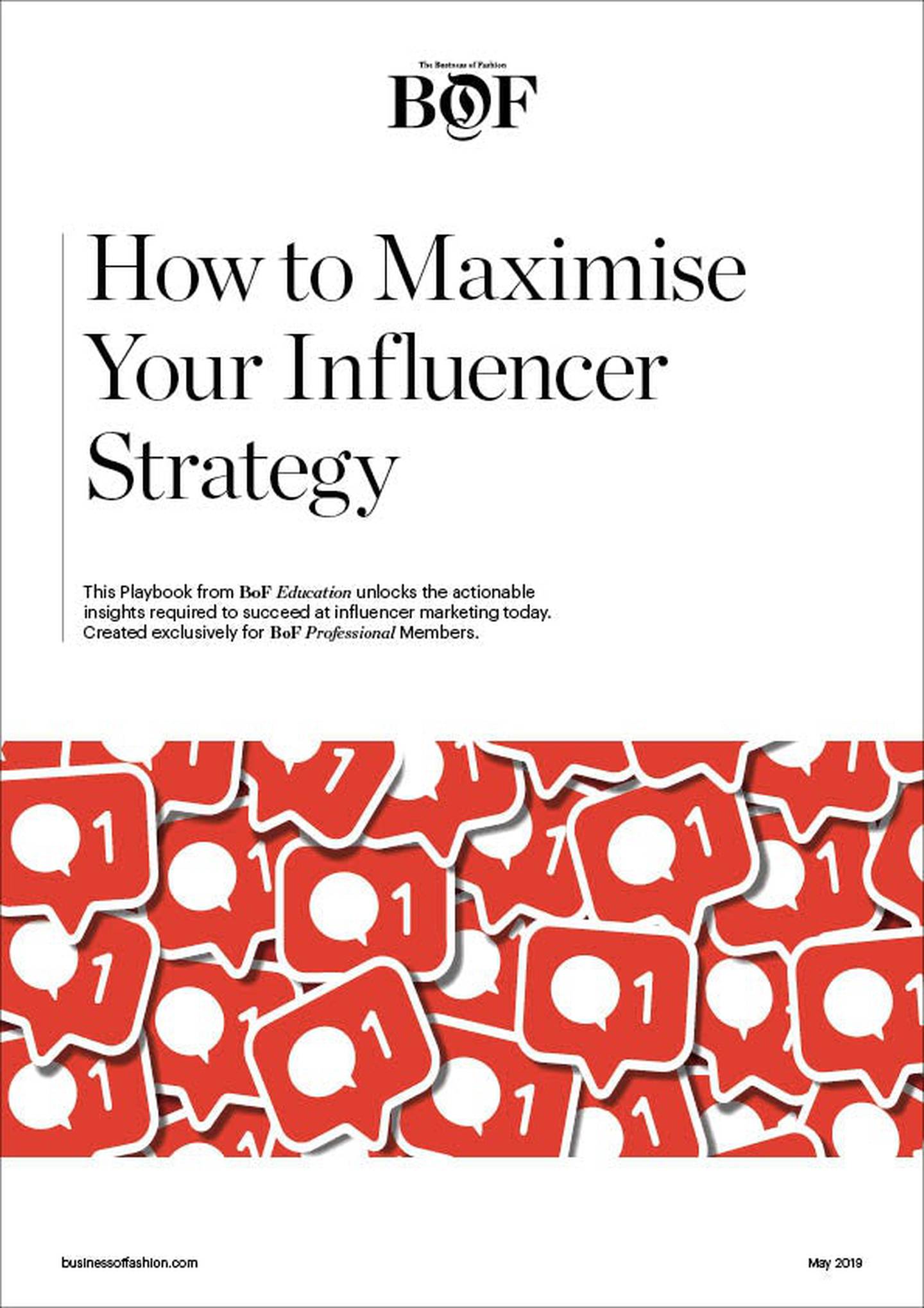
There is a new edition of this report. Click here to read BoF’s latest guide to influencer marketing.
LONDON, United Kingdom — Selling product through celebrity and personality is nothing new. The practice dates back, at least, to Britain’s system of signalling royal patronage. But the rise of social media and the millennial generation has supercharged the influence economy, fundamentally reshaping how influencers fit into the marketing mix. A few key elements separate a strategy that delivers authentic consumer engagement from one that is a waste of valuable marketing budget at best, and brand damaging at worst.
With two out of three millennials blocking traditional ads, brands have recognised the power of influencers to create meaningful dialogue with their communities about brands and products. Gone are the days of broadcasting one-way brand messages to passive consumers.
The Influencer Playbook | Source: BoF
According to Business Insider Intelligence, the value of the influencer economy is predicted to stretch to between $5 and $10 billion in global ad spend by 2022. But with this growth, brands are engaged in an escalating battle to stand out. Social platforms are increasingly saturated by sponsored content and consumers are skeptical of influencers who come off as “inauthentic.”
This challenging landscape creates many questions for fashion brands: Should they feature a micro-influencer or mid-tier influencer in a campaign — or spring for a Kardashian? How can they tell if an influencer marketing campaign is working? And above all: Is influencer marketing really worth it? For a brand of any size, executing a campaign that delivers a return on investment can be a challenge, and comes with no guarantees.
To answer these questions, BoF reveals actionable insights from influencers, marketing experts and top minds at leading agencies and brands, along with case studies and practical templates, in our Influencer Marketing Playbook.
Here we boil down five key lessons to cut through the noise and help any business maximise their influencer strategy.
Lay the foundations
Starting with a clear vision of the target consumer and campaign objectives has a big impact on driving successful influencer activations. “Really think about who you are and what message you’re trying to communicate,” says Max Stein, founder and chief executive of creative management agency Brigade Talent. Whether the objective is to increase brand awareness within a particular audience segment, drive sales of a new product launch, or change brand positioning through creative storytelling, campaign objectives and KPIs should be specific and measurable, including timeframes, platforms, audiences and metrics. “Brands should really know themselves first,” says Stein.
Focus on alignment
There is no set template for what makes an influencer able to deliver results. But focusing on brand alignment over follower numbers enables brands to select talent that resonates with the target audience, even if this means flexing on a tried-and-tested formula. Lyn Slater, otherwise known as Icon Accidental, the 65-year-old New York college professor and influencer, says that brands frequently make the mistake of assuming she’s best-suited to pitch to senior citizens. “They want me to sell something that is for people who are 60 to 80… That’s not my audience on Instagram,” she says. Brands that have mastered the art of selection understand what connects the influencer with their following and can leverage that value in a campaign.
Collaborate, don’t transact
While choosing the right partners and ambassadors is half of the challenge, nurturing long-term, reciprocal relationships with your influencers is critical to creating maximum value. “We’re not just walking billboards,” says fashion blogger, brand consultant and influencer Camille Charrière. And it’s frustrating for influencers to be treated as such: macro influencer Aimee Song says that it’s a “turn-off” when a brand she hasn’t worked with before reaches out and asks for a quote without introducing themselves. Take time to get to know the person, their preferences and how they work.
Monitor success selectively
While the availability of performance data and measurement tools has increased, so has an appetite to determine ROI for influencer marketing. Brands can reduce the friction of performance measurement by selecting metrics that align with objectives, and not rely solely on numbers when assessing campaigns. On striking the right balance between data measurement and the more unquantifiable benefits of influencer marketing, Stein says, “no one would have taken one ad in [a publication], waited to see how much they sold from that ad and say ‘we don’t want to advertise in that magazine anymore.’” Understanding the business goals and influencer campaign objectives will directly inform which metrics to track.
Relinquish (some) creative control
It’s influencers, rather than brands, who are going to have the best ideas about how to tap the connection with their audiences. Giving up control can be difficult for brands, but it’s often necessary. “It’s like if you were to ask a painter to do something, and then you told them exactly how to do it,” says Raina Penchansky, co-founder and chief executive of the first influencer talent management agency Digital Brand Architects. While brands need to make their campaign and business objectives clear, they also need to trust influencers to understand their market and relinquish the creative reins to create content that really resonates. “There’s influence, and then there’s content creation… and you have to be doing both today,” says Penchansky.



